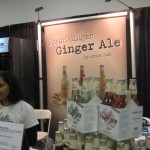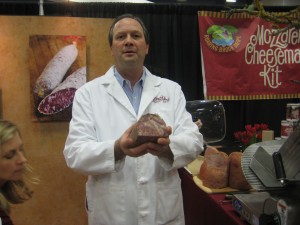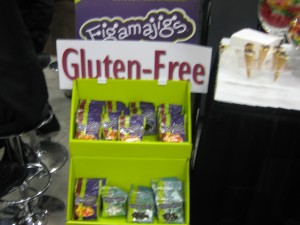The Fancy Food Show was jam-packed at San Francisco’s Moscone Center…. good news for business but making it difficult to navigate during a truncated visit this week. Here are some highlights:

Trending up: cured meats, especially Serrano and Parma hams. I remember when it was a rare treat to get a slice of one of these beasts; this year they are everywhere. Though oddly enough, the salt content of most seems significantly reduced from classic preparations. There was also a jerky stand advertising 50% less sodium than traditional jerky. Also, lots of high-end sodas.
Trending down: nuts. Once a massive snack category, the vendors showing fancy smoked and salted nuts are today few and far between, Too much fat for today’s snacker? Baja Bob’s, a low calorie cocktail maker, can pour you a margarita for 60 calories vs 240 calories for a regular margarita. The benefit of which, they explain, is that your date will have more than one.
Down and out: gluten free everything, All of last year’s signs were gone. Also, vendors trumpeting the ‘USDA Organic” certification were rare even though a pavilion was set aside for them. May be that, as some of the folks at Terra Madre Day speculated, the designation is cumbersome and simultaneously lets in questionable products while not defining a level of quality that is actually useful.

Product of the year: Testa di Porco (head cheese) from Fra’mani. Paul Bertolli has been threatening to bring this product to market for several years and last Sunday it happened. Ethereal. It’s not little bits of this and that like traditional head cheese but nice big chunks of celery-cured ham held together with a clove-y gelee. People were standing in line for this one.
Trend to watch: consolidation. NYC-based Rick’s Picks, to take one example, is now shipping 10 standard products rather than 14 in the past. In a tough economy retailers can’t be asked to stock that many SKU’s. Rick says there’s a demand for “spears” but that yen is now satisfied with a classic dill sour (really crunchy and good) and the green bean and asparagus spears have been put out to pasture.
Most popular giveaway: showgoers who traveled across the country, and could have all the food they wanted, stood in a long line to get a tea press with the Tea Republic logo. Starbucks take note.
